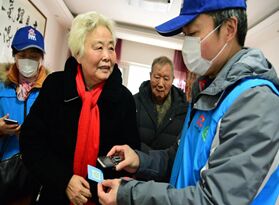聚焦老年人面临的"数字鸿沟"问题
|
The plan sets objectives for work in the 2020-2022 period focusing on seven types of services and scenarios most frequently used by or facing the elderly, such as day-to-day traveling, medical treatment, recreational activities, and civic services. By the end of 2022, the level and convenience of smart services for the elderly will be significantly improved, online and offline services will be better coordinated, and long-term mechanisms bridging the digital divide will be established, according to the plan.
Improvements will include securing elderly services in emergencies, including optimizing the health screening procedure that requires health codes produced with mobile applications before entering public places, and offering basic services to senior citizens staying at home. The plan urged efforts to help the elderly make medical treatment appointments by providing diversified channels and improving the way online appointments are made. It also underscored the importance of retaining traditional financial service modes while making online consumption more convenient for this group. To improve the competence of the elderly in terms of technology, measures will be taken to increase the supply of senior-friendly products, redesign internet applications, and enhance technology training for them. |









